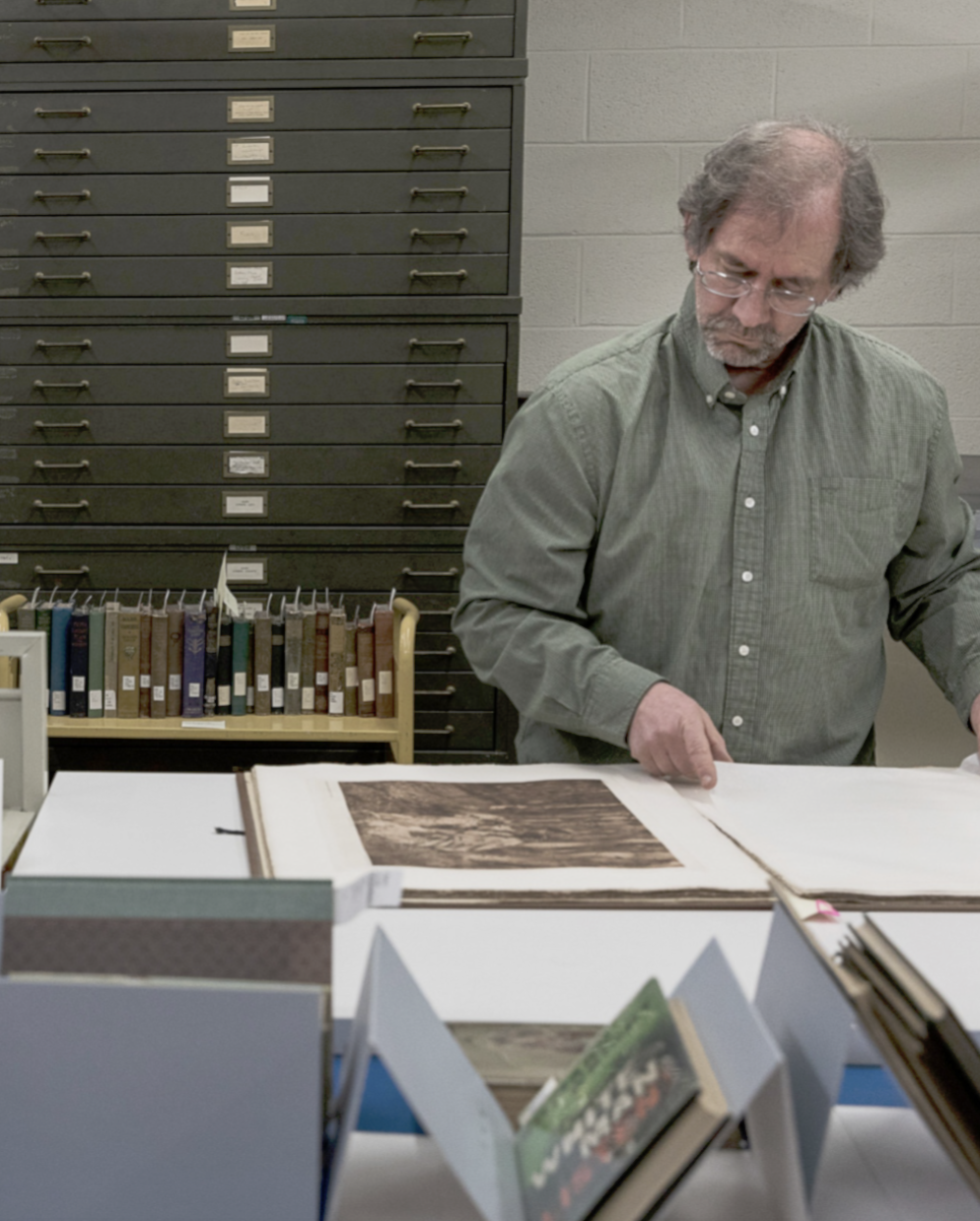It's in the Archives
Photo by Max Catalano
Rachael Beardsley
For William Kimok, history is at its best when it has a personal touch.
When Kimok gets to use archive materials to teach students about the human side of history, he considers his role as university archivist a success. For him, the most important part of history is what it can tell us about ourselves.
“I’ve had students tell me they hate history,” Kimok says. “I don’t know how you can hate history. It’s an inanimate thing, and you wouldn’t be here if it wasn’t for … the history of the people that came before you.”
The wide range of artifacts, records and objects in Ohio University’s Archives and Special Collections is staggering. The moving shelves in Alden library’s Mahn Center house rare books alongside records and photos from the university’s history.
As OU’s archivist, Kimok organizes and oversees the Mahn Center’s mass of materials. He received his undergraduate and master’s degrees in history from the State University of New York at Albany before coming to OU for a doctoral degree. He never completed his PhD.
“As passive as this sounds, [the PhD] didn’t happen, meaning that … I just wasn’t up to that many more years in college,” Kimok says. “But at the last part of my graduate career here … I got a gig here in the archives as a student assistant to the records manager.”
Kimok became OU’s first official archivist in 2003. Though the university had employed many different archivists, no one was working solely on OU history until Kimok took the job, a role he has held for 16 years.
Kimok says his favorite part of the job is teaching. He enjoys working with the archive’s collections, but the job wouldn’t be rewarding if he were stuck on his own all the time.
“To me, even though it’s neat to be around old things and learn about history, it wouldn’t be nearly as much fun, and probably not fun at all after a while, if I couldn’t use these historical items, this historical knowledge, to instruct students and help them to learn,” Kimok says. “Everything I do, I really try to gear it toward teaching.”
Hannah Reynolds, a student worker in the archives, says Kimok is an invaluable resource for people who want to know more about OU history. She says that, chances are, he knows the information a person needs. And if he doesn’t, he’ll take the time to find it.
“He’s really an educator in Ohio University things,” Reynolds says. “If you need to know about something that happened at OU, you go to Bill to learn.”
Kimok helps students learn in a variety of roles. He is the instructor and academic advisor to students in his section of the University College class Mastering the University Experience. The class helps undecided first-year students find a major and adjust to college life. He also teaches around 50 or 60 times a year when professors bring their students into the archives for workshops. On those days, Kimok focuses on showing students that primary sources are more than just newspaper articles and journal entries—they are firsthand accounts of life.
Kimok often teaches about women’s history at OU. He uses old student handbooks to illustrate the differences in education depending on a student’s sex. Women had 76 pages of rules, curfews and dress codes, whereas the men’s handbook had only 29 pages. He says men were taught to be scholars, while women were taught to be ladies.
The archives also contain a wide range of artist books, or books that tell a story in a nontraditional, often nonlinear, way. For example, “How to Transition on Sixty Three Cents a Day” is an artist book by an Oregon-based author that tells the story of his gender transition through a collection of postcards.
“So many books from the old days are just old white men, and we want to have more stuff in our library, more connection to life as it really is, so that gives us a chance to get away from just one group of people,” Kimok says.
One part of the archives that Kimok is often approached about is the Ridges collection, or the “Spook Files,” as he sometimes calls them. People want to hear ghost stories, and Kimok tries to make that a teaching moment as well.
“I know there was the outline of the dead body at the Ridges, but that was a person,” Kimok says. “Think about this. At one time that was a human being, so don’t just talk about ghosts and haunting. That was a human being. ... Think about the humanity of it.”
Whatever the subject, Kimok hopes students will come away from the archives thinking about the humanity behind the history.
“[History] isn’t just memorizing and regurgitating,” Kimok says. “It’s thinking critically. Sometimes [my teaching] works, and sometimes [students] go away and say, ‘That’s the most boring few minutes I ever had in my life.’ Which is okay, but we do hope that somewhere down the road they’ll remember they had the experience.”

